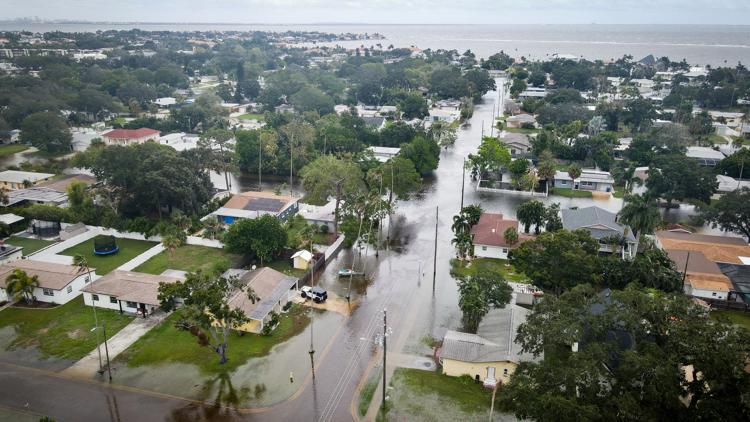ST. PETERSBURG, Fla. — 10 Tampa Bay's Weather Impact team is reporting record-breaking levels of storm surge across the Tampa Bay area during Hurricane Helene.
Below is a comparison of previous and new records of storm surge in Tampa Bay. Keep in mind that as of this writing, the water is still rising and these numbers are subject to change:
Clearwater
Previous record: 4.02 ft. (1993)
New record: 6.67 ft.
East Bay
Previous record: 4.56 ft. (2023)
New record: 7.19 ft.
Port Manatee
Previous record: 3.69 ft. (2023)
New record: 6.04 ft.
Old Port Tampa
Previous record: 4.18 ft. (2023)
New record: 6.83 ft.
St. Petersburg
Previous record: 3.97 ft. (1985)
New record: 6.83 ft.
Cedar Key
Previous record: 6.89 ft. (2023)
New record: 9.3 ft.
Storm surge is the deadliest part of any tropical system. It's defined as the abnormal rise of water over and above the predicted tides. The rise in water level can cause extreme flooding, according to the National Weather Service.
How to see your threat of storm surge
There is an interactive tool from the National Hurricane Center that shows the threats on a map.
This tool allows users to zoom in on their home or area to see the potential storm surge flooding. Click here to use it.
If the threat is greater than 1 foot and there are mandatory evacuations, residents should consider leaving the area.
Factors that impact surge
Storm surge is produced by water being pushed toward the shore by the force of winds moving around the storm. The potential for surge depends on multiple factors:
- Wind intensity
- Size of wind field (the three-dimensional pattern of winds)
- Length of wind (time)
- Storm pressure
- Speed of storm
- Angle of attack
- How deep the ocean or bay is



